Dutch embassy in Kyiv supporting mine clearance efforts: ‘86 minefields identified’
Daria Zhydkova from Ukraine was due to go to Angola to work for the HALO Trust mine clearance organisation. She posted her visa application in Kyiv in the afternoon. That night Russia invaded Ukraine. Daria never made it to Angola. She’s now doing the same job, but in her own country.
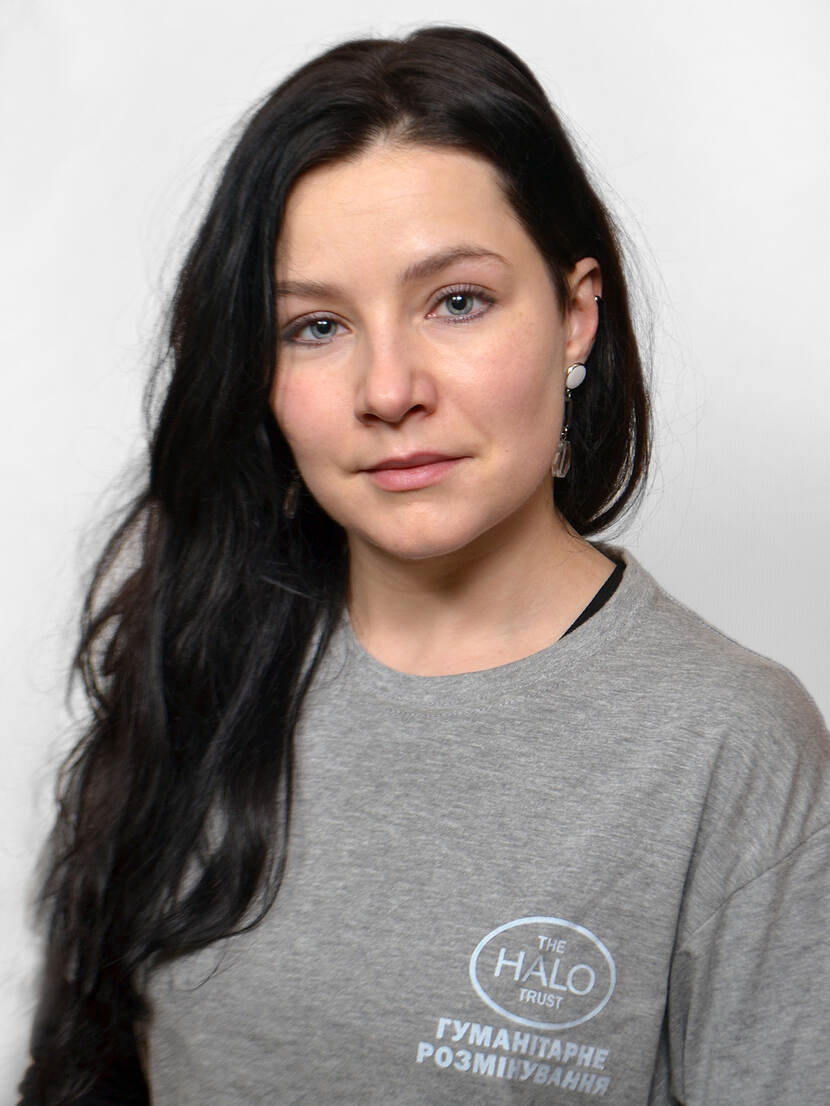
What does the HALO Trust do?
‘The HALO Trust is an international organisation that implements mine clearance programmes. We’ve been doing this work since 1988, and are currently active in 30 countries. As well as mine clearance, HALO also educates civilians about the dangers of landmines and unexploded remnants of war via house-to-house calls and meetings for local communities. This will hopefully result in fewer accidents and fewer casualties. For example, we teach children how to recognise unexploded munitions so they don’t play with them. And we explain to farmers who may encounter them on their land that they should never try to remove them themselves.’
Tell us what your work involves
‘As a member of the project team at our office near Kyiv I'm responsible for monitoring the progress of projects and contact with donors. This is my first time working with HALO. I was supposed to go to work with them in Angola, but when Russia invaded Ukraine HALO asked me what I wanted to do. I replied that I didn't want to leave my country.’
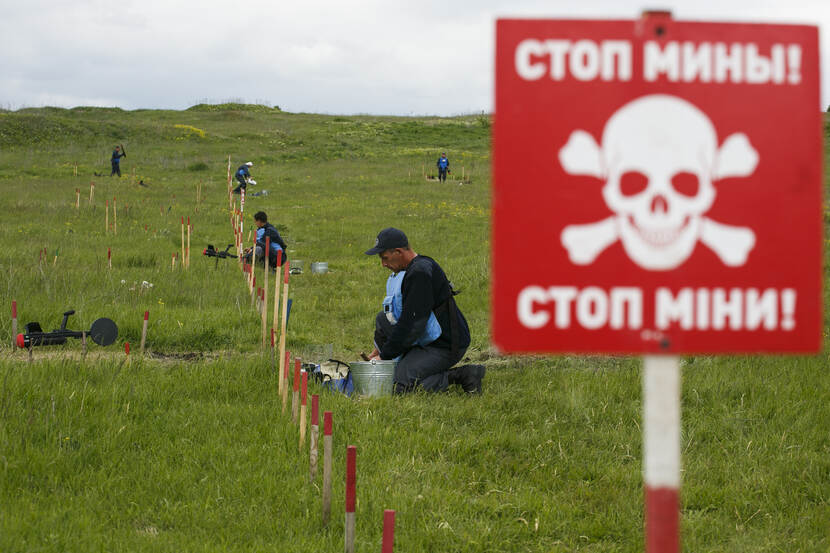
Support from the Dutch embassy in Kyiv
The Dutch embassy in Kyiv is making several financial contributions to support mine clearance projects. HALO will receive a total of 4 million euros between 2020 and 2024. In the summer of 2022 an extra 10 million euros was earmarked for mine clearance in Ukraine. Four million went to the United Nations Development Programme (UNDP) for mine clearance coordination, and the remaining 6 million to the existing mine clearance programme operated by four international organisations, including HALO.
Where in Ukraine is HALO active, and how many staff do you have?
‘At the moment we’re working with 650 staff in four regions: Kyiv, Chernihiv, Sumy and Kharkiv. In 2023 we'll be extending our work to the southern regions, depending on the security situation and whether we are given the go-ahead by the authorities. By the end of next year we expect to have 1,200 staff working with us.’
The Dutch embassy in Kyiv is supporting HALO. What form does this support take?
‘The Netherlands’ contribution of 4 million euros up to 2024 is of vital importance to our work. The embassy has been supporting our work in the Donbas region since 2020. When the Russians invaded in February 2022 this support was switched to regions where we could work in relative safety.’
Do you keep the Dutch embassy informed about your work?
‘Absolutely. Last November we met the Dutch ambassador and his team to update them. We were also planning a joint visit to one of the minefields so they could see the work we do for themselves. However, due to the security situation we’ve had to shelve those plans for now, but we hope to be able to plan a working visit later this year.’
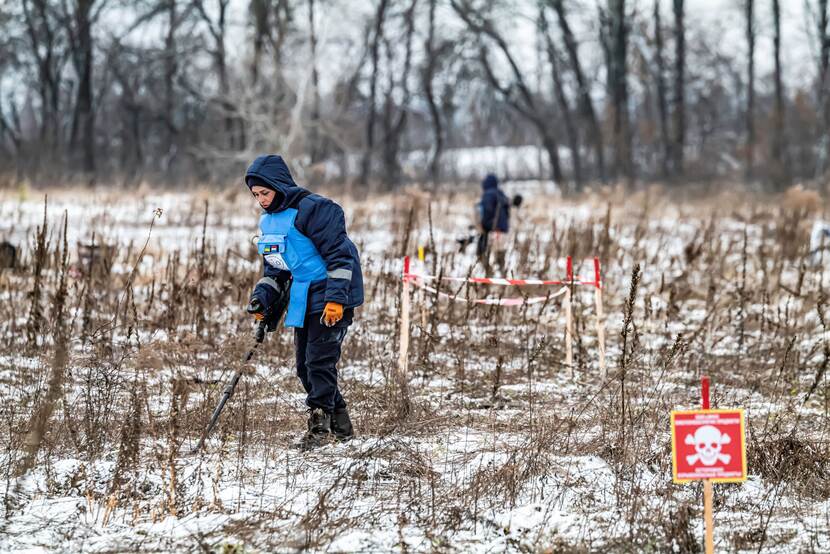
Why is it important to clear mines now, while the fighting is still ongoing?
‘Now the Ukrainian army is pushing the Russians back in more and more areas people can start to return home. They're starting to repair their homes, shops and businesses. And entering the forest to collect wood and forage for berries and mushrooms. And they're working their land again. All these places need to be cleared. People are at real risk of injury or even death otherwise. And Ukraine can only safely start reconstruction in earnest once these areas are “clean”. Our ultimate goal is to clear everything.’
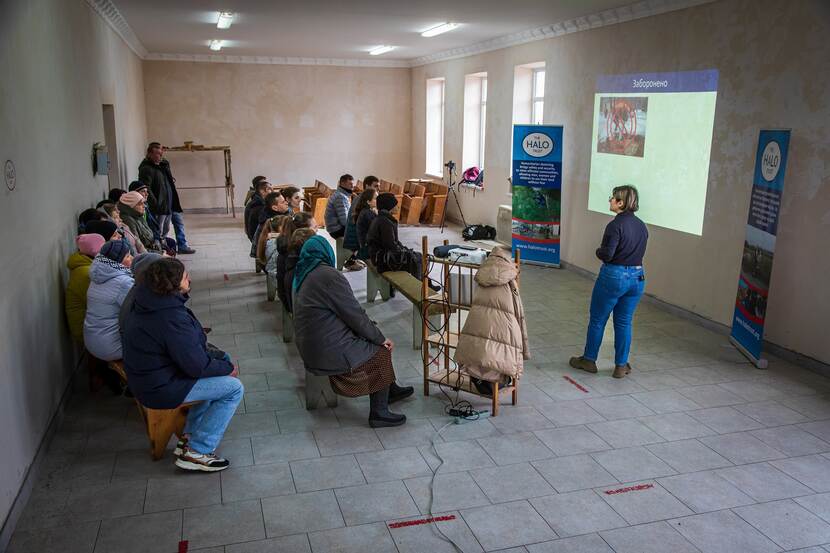
How do you identify where the mines and explosives are?
‘HALO has a team of investigators to do this. They use open sources to map everything. For example, satellite images of battlefields showing the location of craters. Newspaper articles and YouTube videos are another possible source of information. The best information is collected by our colleagues on the ground. They talk to residents to find out more about possible minefields and locations where explosives might be found.’
Time-consuming work
‘Identifying everything is extremely time-consuming. The areas we are trying to map can be as big as several square kilometres, or as small as one square metre if, for example, a farmer has found an unexploded grenade in his field.’
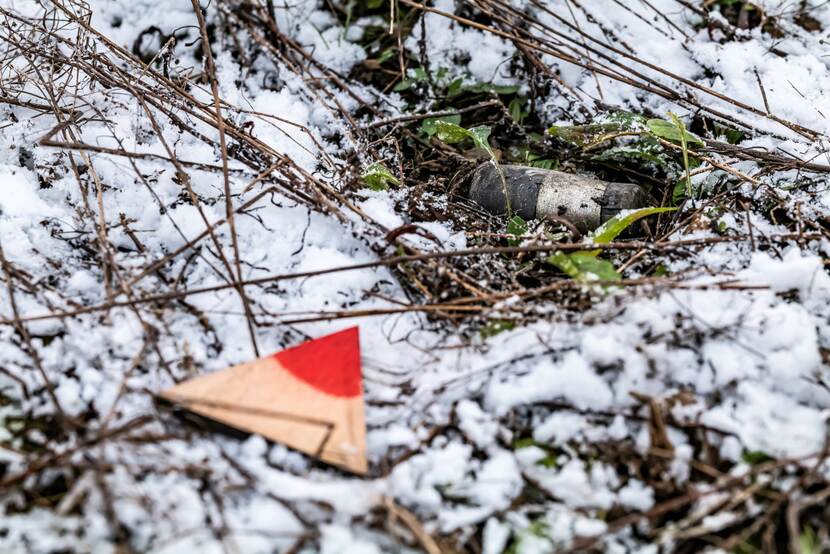
What kind of mines and explosives do you find?
‘So far we've identified about 500 different types. There's no clear pattern. The Russians use whatever they can get their hands on. From old Soviet-era mines to modern, highly sensitive plastic mines. The latter are difficult to detect. We also find mines with trip wires. These take a long time to clear. When it comes to explosives, cluster munitions form a particular risk. Cluster munitions are bombs which spread dozens of smaller explosives over a wide area when they explode. Not all of these smaller items explode immediately, meaning they can kill or maim people for years afterwards.’
What has HALO identified so far?
‘We've mapped 5 million square metres so far, and identified 86 minefields. We've also located 2,277 explosive items, including cluster munitions, anti-personnel mines, anti-tank mines and other unexploded munitions.’
There’s no end in sight to the war. How big is the risk that the areas you've cleared will get filled with mines and other explosives all over again?
‘That is a risk, and we accept it. We can’t wait until the war is over to clear things. The mines and other explosives that are out there now form a direct danger. Anything we can clear sooner rather than later makes the country safer.’
Landmines are cheap and quick to lay. But it’s expensive and time-consuming to clear them. When will Ukraine be landmine free and what is the financial cost?
‘One year of war can mean years and years of mine clearance. It will cost tens of millions of euros. In Ukraine mines have already been laid in an area four times larger than the Netherlands. I can’t give a timeline or estimate the costs, but the sooner the war is over the better. Every week counts. The honest answer is that, even as it stands now, the HALO Trust will have to be active in Ukraine for years to come. Thanks to the support of our partners, including the Dutch embassy, we can continue to make the country safe.’
|
Read more about Dutch aid for Ukraine:
|